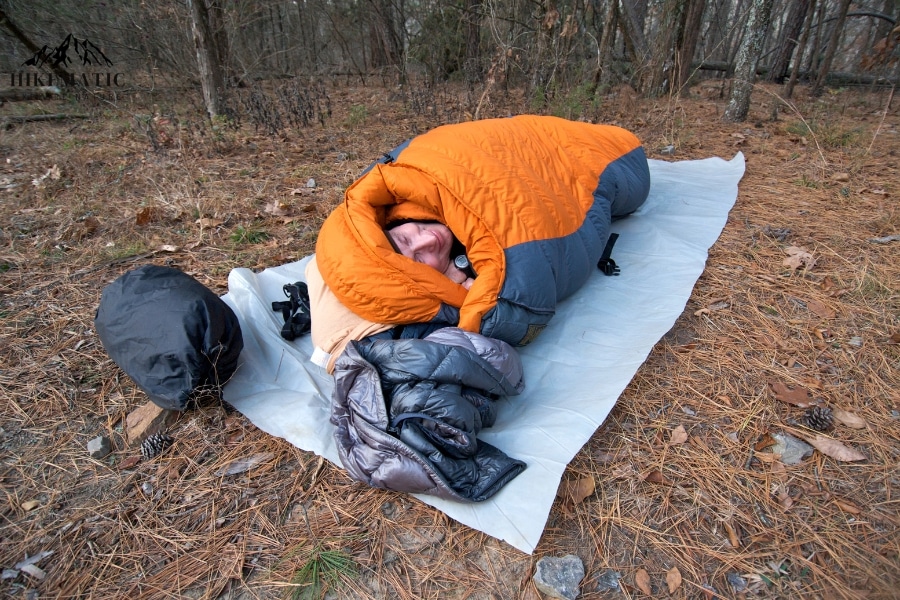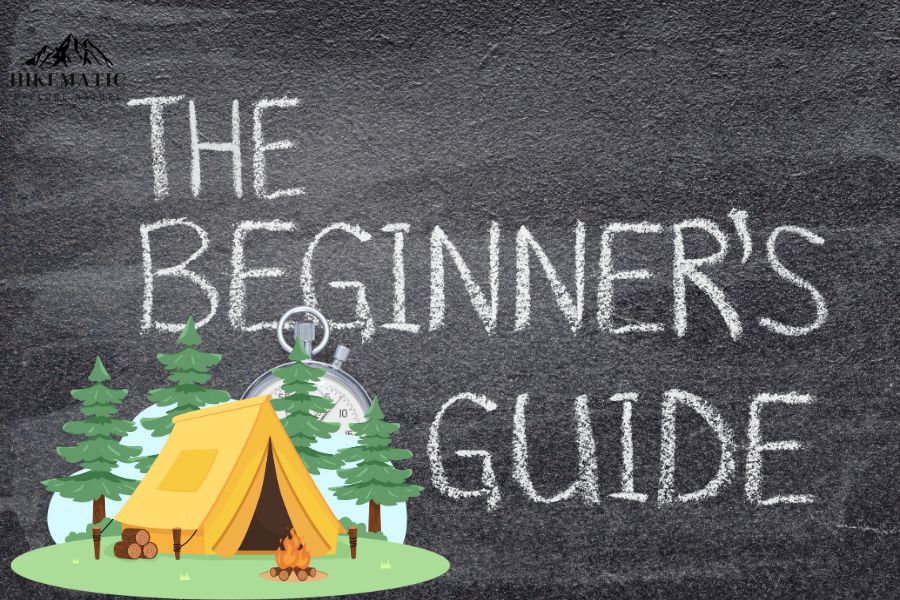Have you ever thought about why so many people enjoy sleeping outside instead of in their own beds? Camping can be a relaxing way to get away from the stresses of everyday life, connect with nature, and enjoy the simpler side of life.
For people who have never been camping before, the thought of tent camping might be too much. However, armed with a few camping tips, a novice can swiftly commence and relish the joys of outdoor living.
Imagine awakening to the sound of birds chirping, the fresh air filling your lungs, and no technology getting in the way. Camping lets you get back to the basics, enjoy the beauty around you, and find peace in the little things. Are you ready to start camping? Allow us to begin!
Planning Your First Camping Trip
For an outdoor adventure to go well, you need to plan ahead. If you want to enjoy camping more or are new, knowing the basics can help. Let’s talk about the most important parts of making plans for your first camping trip.
Choose a camping destination.
Start by picking a place that fits your level of comfort. When picking a camping spot, think about the facilities, how simple it is to get to, and the view. State parks, national parks, and private campgrounds are all popular places for first-time campers. Most of the time, these places make it simple to get to things like bathrooms and clean water.
Types of camping
Learn about the different kinds of camping so you can choose the one that’s best for you. Backpacking is an excellent option for individuals seeking an adventurous experience and preferring to hike in remote areas. When you camp by car, you can keep your car close by, which makes it easier to move your gear.
If you’d rather be more relaxed, glamping combines the natural beauty of camping with modern comforts like electricity and soft beds. Your choice will change how you plan your camping trip.
National Parks vs. Private Campgrounds
Both national parks and private campgrounds offer distinct advantages. National parks are excellent places to see beautiful nature, and they usually have well-kept trails and visitor centers.
They might need reservations, especially during busy times. Private campgrounds, on the other hand, usually have more features, like Wi-Fi, access to stores, and play areas. Consider the pros and cons of each before your first camping trip and choose the one that suits your needs and preferences.
Setting up your tent
Camping trips can be more fun and stress-free if you know how to set up your tent correctly. To make sure your tent stays put, you need to pick the right spot and use a tent footprint.
Picking the right spot
When choosing a place to set up your tent, flat ground is best. This makes sure you have a good night’s sleep and stay stable. Also, think about shade to keep you cool during the day and protect you from the wind.
Another thing to think about is privacy. Pick a spot away from the main trails and other campers.
How to pitch your tent
First, lay out all of the tent’s parts. You need poles, stakes, and a rainfly to put together a tent. Spread out the tent footprint before you put your tent down on it.
Ensure you fully extend the tent poles before securing them to the tent body. Push stakes through tent corner loops and tighten. Secure the rainfly to stabilize the tent, especially in rain.
Using a Footprint for Your Tent
A tent footprint is a layer of protection that you put under your tent. It protects the bottom of the tent from wear and water, so it lasts longer.
In addition, it adds an extra layer of warmth and insulation, making your camping trip more comfortable. To keep water from building up, make sure it’s a little smaller than the tent base.
Camping Essentials
A comfortable camping trip depends on how well you pack. To keep everything in order, here is my go-to camping list.
- The Right Outdoor Gear
- A first-aid kit that has everything you need
- Carry-On Fire Pit
- System for the Filtration of Water
- Follow these “Leave No Trace” rules:
Choose clothes that are right for the weather. Layering is the key.
A full first-aid kit is important. You must have bandages, antiseptics, and medicines. You need to be ready for accidents to happen.
Fire pits make it safe to have fires. If you want to follow different camping rules and stay safe, choose portable versions.
Follow the “Leave No Trace” rules. Basically, you should pack out what you bring in. Take care of your environment by reducing the damage you do.
Water filtration is extremely important. Using portable filters or purification tablets, make sure the water you drink is clean.
Bringing the right camping gear will make your trip safer and more fun. Making plans ahead of time keeps surprises at bay, so you can enjoy the outdoors.
Meal planning and keeping food cold
A well-thought-out meal plan is essential when going on a camping trip. It ensures that you eat healthy meals without having to stress out about what to eat at the last minute.
Creating a Meal Plan
How long and what kind of trip do you want? You should plan your meals for breakfast, lunch, dinner, and snacks. To make cooking at camp easier, choose foods that won’t go bad quickly and recipes that are easy to follow.
Cooler Basics
Keeping food cold is important to keep it from going bad. Pick a cooler that has enough insulation and put ice or ice packs inside it. Put the food in a way that makes sense, with the most-used items at the top. Remember to check the temperature of your cooler every day.
Camp cooking tips
For flexibility, good camping cooking tips say to use either a camp stove or a portable grill. To save time at the campsite, prepare the food at home. Like a picnic table, keep your cooking area clean and well-organized.
This makes sure that cooking goes smoothly, so you can enjoy your meals while camping without any problems.
Staying Comfortable: Sleep and Seating
As with any trip, comfort is key. That’s why it’s important to choose the right sleeping and sitting gear. Let’s look at the best sleeping bags, sleeping pads, air mattresses, and camp chairs to make sure you have a restful and enjoyable camping trip.

Selecting both a sleeping bag and a sleeping pad
It is essential to choose the right sleeping bag and sleeping pad for a comfortable night’s sleep. A sleeping bag should be right for the time of year and the temperature.
Think about whether you’ll need extra insulation for nights when it’s cold. A sleeping pad can make your camp much more comfortable by keeping you warm and cushioned.
Air Mattress vs. Foam Pads
Which one you choose—an air mattress or a foam pad—depends on your own preferences and needs. An air mattress is very comfortable and is often better for camping in a car where weight isn’t a problem.
Foam pads, on the other hand, are simple to carry, last a long time, and are ideal for backpacking. They’re comfortable enough to keep you warm from the cold ground.
Camp chairs are essential.
One of the best parts of camping is sitting by the campfire, so you need camp chairs. They give you more places to sit while camping and provide much-needed rest.
Consider choosing chairs with cup holders, robust construction, and easy mobility. A comfortable chair can make your camp more comfortable overall, so you can relax after a day of adventure.
How Do I Ensure Comfort While Camping as a Beginner?
To ensure a comfortable camping experience as a beginner, focus on proper gear selection and campsite setup. A well-insulated sleeping bag and quality sleeping pad can make a significant difference. Remember to stay organized and prepared, and consider these essential tips for enhancing your camping comfort throughout your adventure.
In conclusion
We’ve gone over all the important things you need to know to feel more confident as a first-time camper after learning how to prepare for an exciting camping trip. Every step, from picking out the right gear to finding the perfect camping spot, is important for making camping trips you’ll never forget. Enjoy the sense of adventure that camping gives you, and remember that every trip is a chance to learn new things and take in the beauty of nature.
A successful outdoor adventure will depend on how well you plan ahead and pick out your gear. Camping memories are made when you sleep under the stars, have fun setting up your tent, and eat a tasty meal that you cooked yourself. There are a lot of resources out there that can help you learn more about camping and improve your skills.
I really want you to learn more about camping resources to get better prepared and knowledgeable. Each trip will boost your confidence and prepare you for more exciting and fun trips in the future. The best thing about camping is that you can’t tell what will happen next.
Here’s to many more nights spent outside and making memories that will last a lifetime!
Q&A
What are the essential items I need for my first camping trip?
Getting ready for your first camping trip means making sure you bring the things you’ll need to be comfortable and enjoy the trip. Have a tent, a sleeping bag, a sleeping pad, a first aid kit, camp chairs, a stove or fire pit that you can move around, and lots of water. Remember to bring your cooler and meal plan. Also, don’t forget to bring a reliable flashlight or headlamp for the night and layers of clothing in case the weather changes.
How do I choose a camping destination?
Picking the right place to camp is very important, especially for people who have never done it before. First, choose the type of camping you want to do: tent camping, backpacking, or maybe glamping. You could go to a national park for a more natural and scenic experience, or you could stay at a private campground with running water and electrical hookups. Read reviews online and use tools like Recreation.gov to find the best places for you based on your interests and level of comfort.
How do I pitch my tent correctly?
At first, setting up a tent might seem hard, but it’s actually pretty easy if you follow a few simple steps. First, pick a safe, flat area that is free of rocks and roots. Set up the footprint to protect the floor of your tent. Then, put together the poles as directed. Put strong stakes in the corners, and attach the rainfly to protect it from the weather. Make sure you’re comfortable setting up your tent in the wild by practicing a few times at home before you go.
What camping gear do I absolutely need?
To ensure a safe and enjoyable trip, you’ll need some essential camping gear. You’ll need a tent, a sleeping bag, and a sleeping pad. You’ll also need a camp stove or fire pit for cooking and tools for preparing meals. You should bring a first-aid kit and water filters if you’re going camping somewhere without running water. Camp chairs and a cooler to keep your food cold are important things to remember.
How do I keep my food cold during a camping trip?
For food safety and fun, it’s important to keep food cold while camping. If you want your cooler to last longer, fill it with ice packs or blocks instead of cubes. Put things that go bad quickly at the bottom, and things you’ll use soon on top. Put the cooler somewhere shaded, and don’t let too much air in or out. Plan your meals and pack smart to get the most out of your space and time.
What is the difference between an air mattress and foam pads?
There are good and bad things about both air mattresses and foam pads. While an air mattress can provide greater comfort and elevate you off the ground, it can also be bulky and require frequent inflation. On the other hand, foam pads are light, last a long time, and keep you warm from the ground. Even though they’re not as soft, they’re easy to set up quickly and carry around.
How can I ensure I’m comfortable sitting at the campsite?
When you’re camping, good seats can make all the difference in how comfortable you are. Pick out camp chairs that are strong, light, and simple to fold up and store. Consider features such as adjustable reclining positions, cup holders, and additional padding. There’s nothing better than sitting back in a good camp chair while eating at the picnic table or relaxing by the fire.

